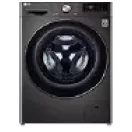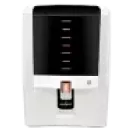The Snapdragon 7 Gen 1 and Snapdragon 730G processors are both designed to deliver high performance, but they cater to different user needs. The Snapdragon 7 Gen 1, a more recent release, boasts a modern 4nm manufacturing process compared to the 8nm process of the Snapdragon 730G. This results in better efficiency and performance. The Snapdragon 7 Gen 1 features a combination of Cortex-A710 and Cortex-A510 cores, delivering higher clock speeds and improved processing power at 2.4 GHz for prime cores, compared to the 2.2 GHz of the Snapdragon 730G’s Kryo 470 cores.
In terms of graphics, the Snapdragon 7 Gen 1 uses the Adreno 644 GPU, which significantly outperforms the Adreno 618 GPU found in the Snapdragon 730G. This upgrade ensures smoother visuals and better gaming experiences. Additionally, the Snapdragon 7 Gen 1 supports faster memory with LPDDR5 at 3200 MHz, doubling the memory bandwidth compared to the LPDDR4X support of the Snapdragon 730G. This advancement translates into quicker data processing and enhanced multitasking capabilities. For those interested in the best
5G mobile phones or
Snapdragon processor phones, exploring devices with the Snapdragon 7 Gen 1 will provide a noticeable upgrade in performance and user experience.
Technical specifications - Snapdragon 7 Gen 1 vs Snapdragon 730G General Info
The Snapdragon 7 Gen 1 and Snapdragon 730G are both mid-range processors from Qualcomm, aimed at delivering robust performance for a variety of mobile applications. The Snapdragon 7 Gen 1, announced on 20 May 2022, is a more recent addition compared to the Snapdragon 730G, which was announced on 09 April 2019. Both processors are designed for smartphones and tablets, offering a balance between performance and efficiency.
| Specification | Snapdragon 7 Gen 1 | Snapdragon 730G |
| Announced Date | 20 May 2022 | 09 April 2019 |
| Class | Mid-range | Mid-range |
| Model number | SM7450-AB | SM7150-AB |
| Brand | Qualcomm | Qualcomm |
CPU
The CPU architecture of the Snapdragon 7 Gen 1 includes Cortex-A710 and Cortex-A510 cores, delivering higher clock speeds and improved power efficiency. It operates on a 4nm process with a TDP of 8W. In comparison, the Snapdragon 730G uses Kryo 470 cores based on Cortex-A76 and Cortex-A55, built on an 8nm process, with a TDP of 5W.
| Specification | Snapdragon 7 Gen 1 | Snapdragon 730G |
| Architecture | Cortex-A710, Cortex-A510 | Kryo 470 Gold (Cortex-A76), Kryo 470 Silver (Cortex-A55) |
| Cores | 8 (1x 2.4 GHz, 3x 2.36 GHz, 4x 1.8 GHz) | 8 (2x 2.2 GHz, 6x 1.8 GHz) |
| Frequency | 2.4 GHz | 2.2 GHz |
| Instruction set | ARMv9-A64 (64 bit) | ARMv8-A64 (64 bit) |
| Process | 4nm | 8nm |
| TDP (Sustained) | 8W | 5W |
| Manufacturing | Samsung | Samsung |
Graphics
The Snapdragon 7 Gen 1 features the Adreno 644 GPU, which offers significant improvements in graphics performance over the Adreno 618 GPU found in the Snapdragon 730G. This results in better gaming experiences and smoother visuals.
| Specification | Snapdragon 7 Gen 1 | Snapdragon 730G |
| SoC | Qualcomm | Qualcomm |
| GPU name | Adreno 644 | Adreno 618 |
| Architecture | Adreno 600 | Adreno 600 |
| GPU frequency | 600 MHz | 575 MHz |
| Execution units | 2 | 2 |
| Shading units | 128 | 128 |
| Total shaders | 384 | 128 |
| FLOPS | 1.0138 TFLOPS | 0.4224 TFLOPS |
| Vulkan version | 1.1 | 1.1 |
| OpenCL version | 2.0 | 2.0 |
| DirectX version | 12 | 12 |
Memory
The memory capabilities of the Snapdragon 7 Gen 1 are significantly enhanced with support for LPDDR5 memory at a frequency of 3200 MHz, offering a maximum bandwidth of 25.6 GB/s and support for up to 16 GB of RAM. In contrast, the Snapdragon 730G supports LPDDR4X memory at 1866 MHz with a maximum bandwidth of 14.9 GB/s and support for up to 8 GB of RAM.
| Specification | Snapdragon 7 Gen 1 | Snapdragon 730G |
| Memory type | LPDDR5 | LPDDR4X |
| Memory frequency | 3200 MHz | 1866 MHz |
| Bus | 2x 16 Bit | 2x 16 Bit |
| Max bandwidth | 25.6 GB/s | 14.9 GB/s |
| Max size | 16GB | 8GB |
Multimedia (ISP)
The multimedia capabilities of the Snapdragon 7 Gen 1 include support for UFS 3.1 storage, a maximum display resolution of 3360 x 1600, and a maximum camera resolution of 200 MP. It supports 4K HDR video capture and playback, as well as multiple video and audio codecs. The Snapdragon 730G supports UFS 3.0 storage, a maximum display resolution of 2520 x 1080, and a maximum camera resolution of 192 MP, also supporting 4K video capture and playback.
| Specification | Snapdragon 7 Gen 1 | Snapdragon 730G |
| Storage type | UFS 3.1 | UFS 3.0 |
| Max display resolution | 3360 x 1600 | 2520 x 1080 |
| Max camera resolution | 200 MP | 192 MP |
| Video capture | 4K HDR @ 30 FPS | 4K @ 30 FPS |
| Video playback | 4K HDR @ 30 FPS | 4K @ 30 FPS |
| Video codecs | H.264, H.265, VP9, VP8 | H.264, H.265, VP9, VP8 |
| Audio codecs | AAC, AIFF, CAF, MP3, MP4, WAV | AAC, AIFF, CAF, MP3, MP4, WAV |
Connectivity and network
The connectivity features of the Snapdragon 7 Gen 1 include support for the Snapdragon X62 5G Modem-RF system, offering download speeds up to 4.4 Gbps and upload speeds up to 1600 Mbps. It also supports Wi-Fi 6, Bluetooth 5.3, and various navigation systems. The Snapdragon 730G supports the X15 LTE modem with download speeds up to 800 Mbps and upload speeds up to 150 Mbps, along with Wi-Fi 6 readiness and Bluetooth 5.0.
| Specification | Snapdragon 7 Gen 1 | Snapdragon 730G |
| Modem | Snapdragon X62 5G Modem-RF System | Snapdragon X15 LTE modem |
| 4G support | Yes | Yes |
| 5G support | Yes | No |
| Download speed | Up to 4.4 Gbps | Up to 800 Mbps |
| Upload speed | Up to 1600 Mbps | Up to 150 Mbps |
| Wi-Fi | 6 | 6 (ready) |
| Bluetooth | 5.3 | 5.0 |
| Navigation | GPS, GLONASS, Beidou, Galileo, QZSS, NAVIC | GPS, GLONASS, Beidou, Galileo, QZSS |
Benchmarking - Snapdragon 7 Gen 1 vs Snapdragon 730GIn the battle of Snapdragon 7 Gen 1 vs Snapdragon 730G, benchmarks provide a clear indication of performance improvements. The Snapdragon 7 Gen 1 outshines its predecessor in various benchmarking tests, showcasing significant advancements in processing power, graphics performance, and efficiency. Let's delve into the specifics of AnTuTu 10, GeekBench 6, and 3DMark benchmarks to understand these improvements better.
AnTuTu 10
AnTuTu 10 benchmarks give a comprehensive overview of the processor's capabilities across CPU, GPU, memory, and user experience (UX). The Snapdragon 7 Gen 1 excels with a higher total score, reflecting its superior performance in all areas compared to the Snapdragon 730G. This is particularly evident in its CPU and GPU scores, making it a better choice for demanding applications.
| Component | Snapdragon 7 Gen 1 | Snapdragon 730G |
| CPU | 147,452 | 90,256 |
| GPU | 212,345 | 130,124 |
| Memory | 89,365 | 60,879 |
| UX | 87,432 | 48,800 |
| Total score | 536,594 | 329,459 |
GeekBench 6
GeekBench 6 measures various aspects of CPU performance, including asset compression, HTML 5 browsing, PDF rendering, and image detection. The Snapdragon 7 Gen 1 shows substantial improvements in single-core and multi-core scores, indicating better performance in everyday tasks and more demanding applications like photo processing and ray tracing.
| Component | Snapdragon 7 Gen 1 | Snapdragon 730G |
| Asset compression | 1,234 | 870 |
| HTML 5 Browse | 1,678 | 1,245 |
| PDF Render | 1,890 | 1,200 |
| Image detection | 1,532 | 987 |
| HDR | 1,234 | 856 |
| Background blur | 1,345 | 923 |
| Photo processing | 1,567 | 1,023 |
| Ray tracing | 1,234 | 789 |
| Single-Core Score | 969 | 538 |
| Multi-Core Score | 2,786 | 1,710 |
3DMark
3DMark benchmarks assess the graphical performance of processors through tests like stability, graphics tests, and overall score. The Snapdragon 7 Gen 1 significantly outperforms the Snapdragon 730G, making it a better option for gaming and graphics-intensive applications.
| Component | Snapdragon 7 Gen 1 | Snapdragon 730G |
| Stability | 98% | 92% |
| Graphics test | 15,234 | 8,923 |
| Score | 3,452 | 1,856 |
Explore Snapdragon mobiles on the lowest EMI from Bajaj FinservBajaj Mall is the best online destination for you to read about all the details, features, and specs of the Snapdragon mobiles Once you have gathered all the information you want, head to the nearest Bajaj Finserv partner store and select the Snapdragon mobiles you want. Use the Bajaj Finserv Insta EMI Card which comes with a pre-approved card limit to make the payment. You can choose a convenient repayment tenure of your choice and repay your purchase in EMIs.
Advantages of shopping using the Bajaj Finserv Insta EMI Card Competitive prices: Bajaj Finserv offers competitive pricing, ensuring that your purchase is budget-friendly.
Low Cost EMIs: With the
Bajaj Finserv Insta EMI Card, buying your desired Snapdragon mobiles becomes hassle-free. Choose a preferred tenure and repay in EMIs.
Zero down payment: Forget about the hassles of an initial lump sum payment as select products are covered under the zero down payment policy.
Exciting deals and cashback offers: By using the Bajaj Finserv Insta EMI Card to purchase a Snapdragon mobiles, you gain access to exciting deals and cashback offers.
Free home delivery: To add to your convenience, select products are delivered free of cost.
Mobile by brandsMobile by budget5G Mobiles by brand5G Mobiles by budget








